BY JAMES GREENBERG
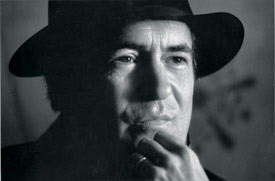 Born in Parma, Italy, in 1941, Bernardo Bertolucci became a protégé of the poet-filmmaker Pier Paolo Pasolini at an early age. By 24 had made his first important film, Before the Revolution, followed by such classics as The Conformist, Last Tango in Paris and The Last Emperor, which won nine Academy Awards, including best picture, in 1987. “I started very young,” says Bertolucci, “and so I have a certain kind of strong relationship with cameras and stories and shots and moving them along.”
Born in Parma, Italy, in 1941, Bernardo Bertolucci became a protégé of the poet-filmmaker Pier Paolo Pasolini at an early age. By 24 had made his first important film, Before the Revolution, followed by such classics as The Conformist, Last Tango in Paris and The Last Emperor, which won nine Academy Awards, including best picture, in 1987. “I started very young,” says Bertolucci, “and so I have a certain kind of strong relationship with cameras and stories and shots and moving them along.”
There is perhaps no living filmmaker who moves his camera with such instinctive and expressive grace as Bertolucci and The Last Emperor (restored on a four-disc Criterion DVD) provided him with the ideal merging of style and content. It was the first feature film authorized to shoot in the 15th-century Forbidden City, the former emperor’s palace. The imperial splendor of the location reminded Bertolucci of a studio backlot. On this real-life soundstage, surrounded by 2,500 extras from the Chinese army, he was at first overwhelmed and retreated to his trailer. “When I saw all these extras, I had a moment of panic and I thought, ‘What am I doing, am I going mad?’”
But despite the enormous scope of the film, Bertolucci followed his usual practice of not storyboarding and not planning shots in advance, deferring instead to the accident of the moment. In this sequence, the director filmed the coronation of the child emperor Pu Yi in the Courtyard and Hall of Supreme Harmony in miraculously only three days. “I was anxious about being inside this labyrinth without having a clue how to find the exit. And I discovered it day by day. I don’t know what I’m doing and then I find out.”
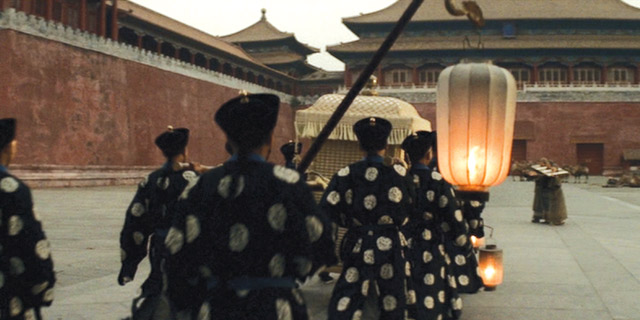
This is a shot of a palanquin carrying the little Pu Yi to the Forbidden City for the first time where he would be a prisoner for a long time. We filmed it at dawn or sunset, which is very similar light. But if you look on the right side you can see these three women passing to the side of the red lantern. Their head and wrists are inside a piece of wood, a pillory, and in China this was a punishment for something they did. It’s just a little touch about the people of China who have been punished for thousands of years.
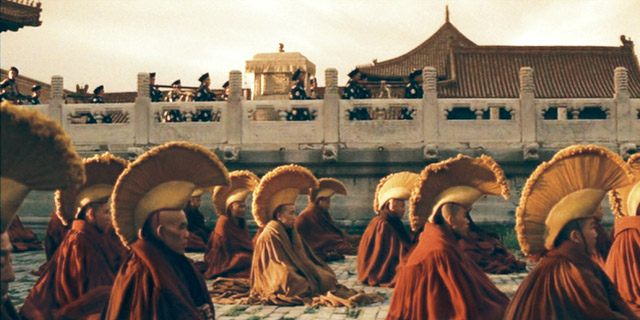
This was at the beginning of my shooting in the Forbidden City, and so I wanted a kind of grand shot to pay homage to the place. It’s a simple dolly shot. The lamas were real lamas we found in Beijing. We shot this with a crane that goes behind the backs of the lamas as they are praying at dusk. I was fascinated by the hats of [costume designer] James Acheson, and I wanted to show them all. You see the palanquin of Pu Yi in the background on the bridge. What we’re getting is the baby being taken from the outside gate inside, and, as happens often in movies, you have to find out the important things under layers of other things.
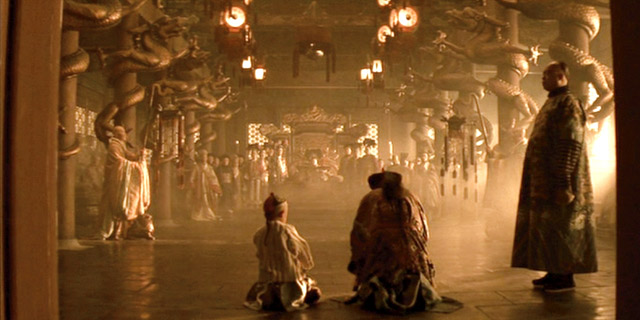
We built this set on a soundstage with a mud floor at the Beijing Studios. It’s the room of the Empress Dowager. The child is being presented by his father and they are bowing. This room with these columns and the dragons and the sculptures does not exist in reality in the Forbidden City. It’s kind of a visionary invention by [production designer] Ferdinando Scarfiotti, a collage of two or three things he found in different temples. I wanted it to be like a fantasy. I shot this with a wide lens, I think a 12 or something like that. It took some time to light because of the dragons twisted around the columns.
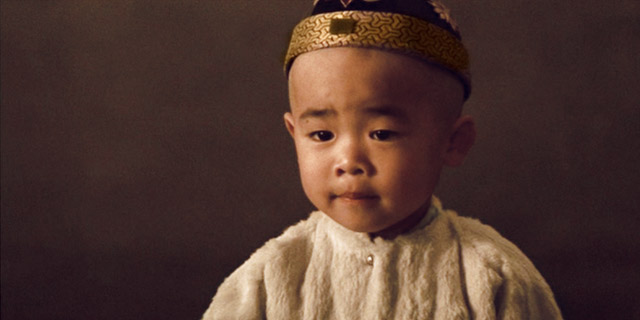
The baby who played Pu Yi at this stage in his life was chosen from about 50 other Chinese babies in California. I remember we cast him on the terrace of the Chateau Marmont. He was ABC, which means American-Born Chinese. And when we went to China to shoot, the Chinese told us, ‘We are already one billion people, why do you bring more Chinese to China?' It was very funny. In this shot he seems very innocent as he is seeing everything for the first time and anything is possible.
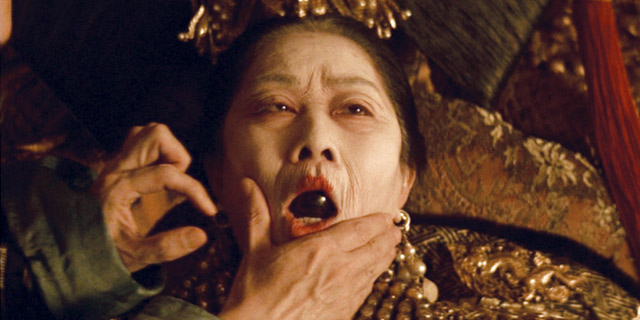
This is the moment when the Empress Dowager dies and the black pearl is put in her mouth. Lisa Lu, the actress playing the empress, had something of the elegance of a real Chinese aristocratic figure who lives in a world of old Chinese memories. That’s why we cast her. And I think that you can see that in her face. Her costume weighed something like 50 pounds because all the embroidery was sculpted in wax and cast in aluminum and then gold plated. Rumor has it that she spent a week in the hospital after wearing the outfit, but she was a real trouper and loved being the dowager.
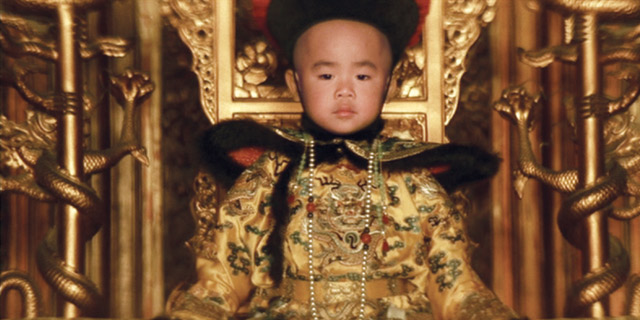
After the empress dies, the child is crowned the new emperor. This was shot in the Hall of Supreme Harmony in the Forbidden City. They didn’t want to let us shoot in there because it was all built of wood and they were afraid of fire. Finally, they give us permission to use a Steadicam, just one person wearing the camera himself. They didn’t want us to go inside with dollies or cranes or any lights. We were in there a very short time and this was the only day we shot an interior in the most important pavilion of the Forbidden City. The rest was shot on soundstages. But without shooting there the film never would have felt the same.
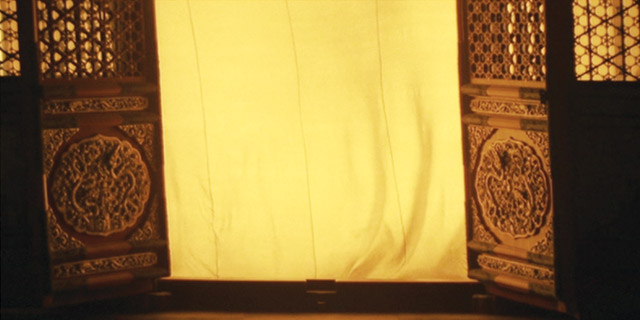
This is still in the Forbidden City and behind the curtain is the world outside. Using that curtain was the only way we could get some light inside and still have a separation from the outside world. So [cinematographer Vittorio] Storaro put all the light outside the door in the courtyard. Yellow is the color of the sun. Every emperor is dressed in yellow. And that yellow, which is the imperial yellow, reminded me very much of the color of my home city of Parma. It’s kind of a very warm, yellow-reddish color, yellow-Parma. I was very moved when I found out that the imperial yellow you see is very similar to the color of my hometown.
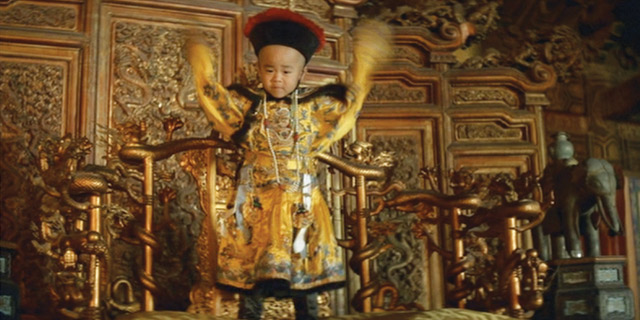
Pu Yi is standing on a throne which is a few steps up. Baby Woo (or Baby Who) we called him. Magically, he was ready for everything. You don’t have to interrogate or teach a baby too much when you are shooting. You have to keep him as far away from the camera as possible and really try to create an environment that is familiar for him. I think it’s quite important that they are very comfortable with the camera because nobody knows what the baby can give you. Here he started flapping his arms like a butterfly, imitating the flapping of the curtain. You know, you have to adapt yourself. With babies you always shoot a documentary.
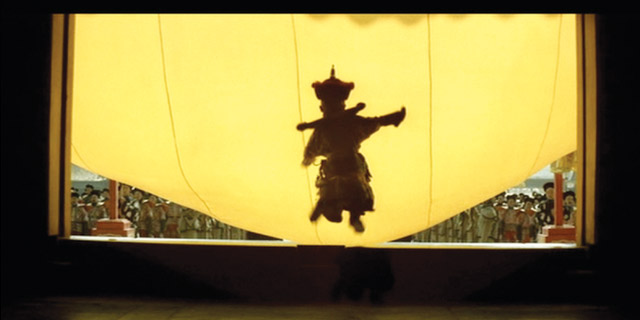
He’s attracted and hypnotized by that yellow curtain. He is like sucked into that yellow. This jump of the baby into the yellow curtain is something that you could not teach a little baby to do. I mean, he loved to go and jump and he was having fun; he was the total innocent. If you can establish a playground with a little actor, something good will happen, and then you will be able to get more or less what you want. Again, this was a handheld shot with the Steadicam.
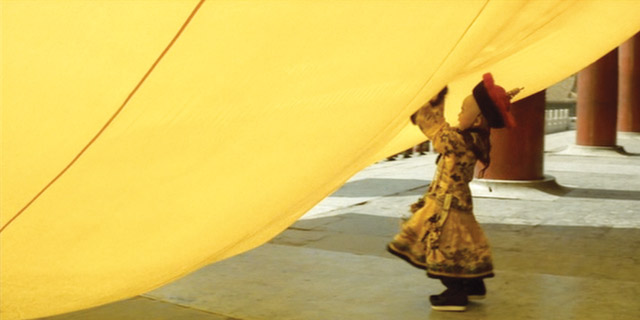
The yellow curtain opens up and becomes a canopy. Pu Yi is kind of running into the imperial yellow. I wanted him to disappear into this yellow. Later, when Pu Yi gets married he sleeps with the two wives and they all go under the same kind of material. So this baby is playing with a yellow curtain and goes on playing, it’s like more filters and hiding. It’s my way of revealing information. I think that the way you reveal something in a movie is very important. That’s why for certain pans I just start from a detail and there will be some time passing before you understand where we are or what is shown. I like to keep secrets.
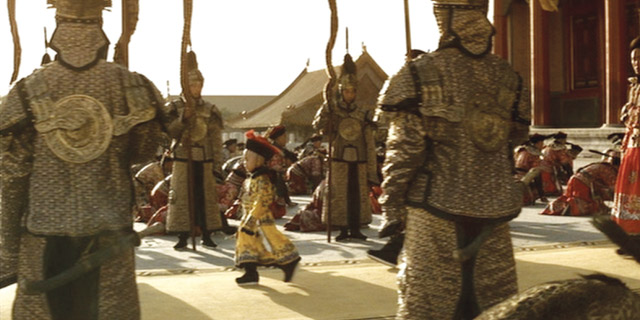
When Pu Yi comes out from the curtain the world outside is revealed. I was talking with Vittorio about this as a kind of second birth for the baby. It was like the Supreme Harmony Hall was giving birth to a child and this child was the emperor. That’s why he comes into the courtyard where there are hundreds and hundreds of soldiers. This scene outside was very nerve-wracking to put together because it’s a composite scene. We filmed some of the top pieces like this on the terrace without the crowd. But a lot of the scene was filmed with the crowd all there. A crane tracking that raises up to look out over the soldiers follows him out into the courtyard.
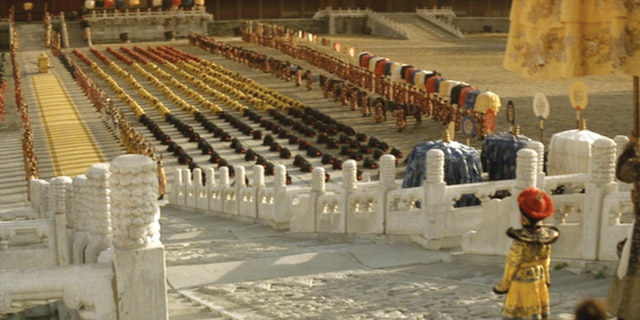
This is a shot from the top of the stairs in front of the courtyard, which shows the kind of paradox of this little baby and the whole dilemma in front of him. I wanted to show how little he is, and how big the courtyard is. And you immediately have a feeling of the extraordinary loneliness. In this moment I remember the voice of the chamberlain giving the rhythm to the shots as he is guiding the bowing of the soldiers in the courtyard. And that influenced the rhythm of the editing. Sound is very important to me and there are two moments when you have to be driven by the sound—when you are shooting and then when you’re cutting, and they are totally different.
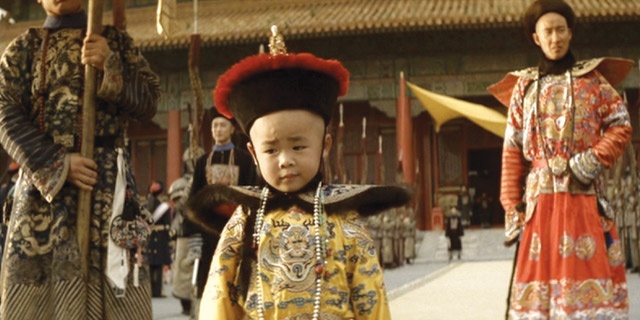
Here is the little baby commenting with his reaction to what he was seeing, all these extras, all these costumes. There are no rational reasons why you go from a wide shot to a close-up. There are no theories to explain that. I think it’s like music. He hears the sound of a cricket in the courtyard among the courtesans and he goes around looking for it. We challenged him to look for this cricket like it was a game and he would get a reward for finding it. We had to keep giving the boy rewards. I said I’d take him up on the crane and after that he did everything. He liked to look through the viewfinder and ride in the crane. So we let him do whatever he wanted.
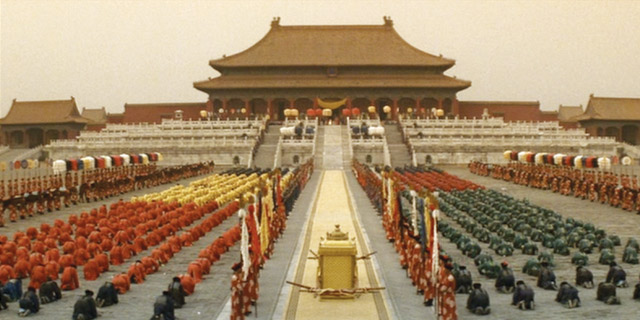
That was a shot made completely from the other side of the courtyard on the top of another pavilion looking down. I said to Vittorio, ‘Can we do a shot from the other side?’ And he ran like crazy with just one camera and the sun was already gone. We couldn’t film 2,500 people tomorrow. So he said, ‘Let’s see what we can do.’ I like to shoot a scene in sequence so you can see the light change through the scene. You can follow this movement [of light]. And since this was the last shot of the sequence, the light was already changing. So I said, ‘Let’s shoot anyhow.’ We had maybe five minutes of light. We had spent weeks preparing this whole scene.